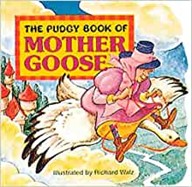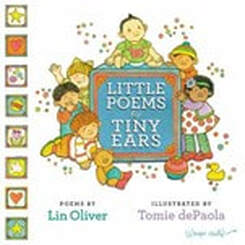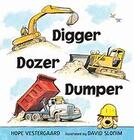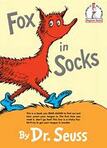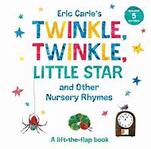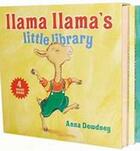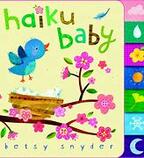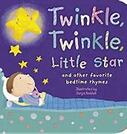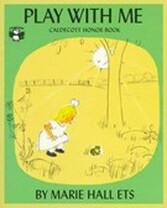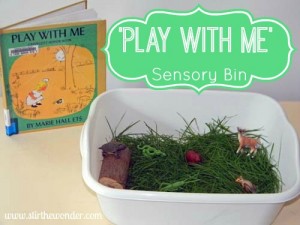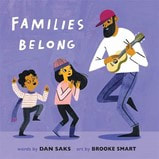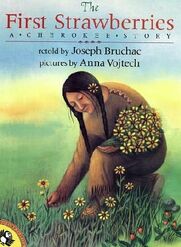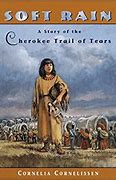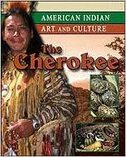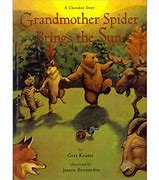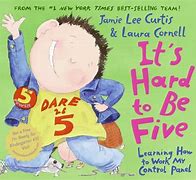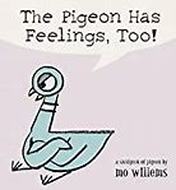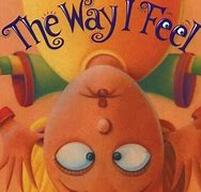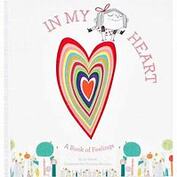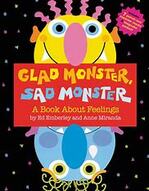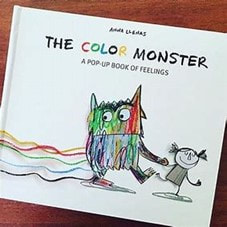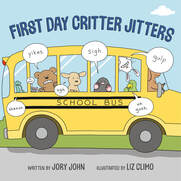July 2021 Fun Book Activities and Curriculum
|
Read A Loud or Play the Above YouTube Video
Rhymes Rhymes are important for language development for babies and toddlers. Here are some helpful hints as you are reading to your baby. • Start by reading nursery rhymes at circle time: Books Finger plays Flannel boards Hand clapping games Songs and chants. This can be done easy at home on your carpet or on the couch holding your infant. • Most of the rhymes are very easy to act out and the role of fantasy play in the lives of young children is an important part of their development. Have fun and be as silly as you want to be. |
Literacy helps word development even in infants. They soak everything in like a sponge even if they show you what they have learned later on in life. Filling their day with words and songs are important for language development.
Babies and Storytime Parents, click above and find similar book titles to read to your infant, instructions on how to incorporate finger plan and crafts into your child's learning, and activities to help develop your child's large motor skills, introduce pretend play, and even snacks that you can make while reading the book. Flannel Board Activity 1. Print the following pictures by clicking on each link: Hey Diddle Diddle Humpty Dumpty Little Boy Blue Mary Had A Little Lamb 1 Mary Had A Little Lamb 2 Mary Had A Little Lamb 3 Sheep Body Cut-Out Jack and Jill Went Up the Hill Little Miss Muffit Old Woman Who Lived in a Shoe 1 Old Woman Who Lived in a Shoe 2 Wee Willie Winkie 2. Laminate each picture and then add a piece of Velcro to the back. You can also just print and take a popsicle stick, glue it on the back and make a puppet. 3. You can use contact paper and tape them to the floor and let your child walk or crawl around looking at the pictures on the floor of the different stories as you are reading to them. |
|
Read A Loud or Play the Above YouTube Video
• Read the title of the book to your child. • Ask him where his ears are and ask him where your ears are. • Tell him, “It’s time to listen!” • Count the number of children on the front page. • Read each poem’s heading and show or act out each of them. Being animated will help keep your child engaged. • As you read body parts, locate them on your child’s body: “Feel your toes, on your feet” or “My nose sneezes! Achoo!” • Ask your child if he likes to do the things seen in the pictures. • Play peekaboo with you child and say, “I’m here!” when you reveal your face. • Point out the items listed in each heading during your everyday activities: “Let’s get in your car seat!” • Read the book once a week to help increase your child’s vocabulary and memory. • Try some of the ideas above. Continue to use your own imagination during book play, too. Have fun with the book and enjoy your time together. New words and sounds your child might learn:
I, see, toes, walking, nose, sneeze, tongue, noisy, puppy, ball, bird, dogs, car, chair, belly, music, snooze, cats, daddy, bath Other Books about Poetry for Children 0-4
|
With this book, you will introduce your child to the wondrous world of poetry! This collection of poems covers the everyday activities that occur in every toddler’s life. The poems are paired with vibrantly colored illustrations for you and your child to enjoy!
Poems and Rhymes
Poems and rhymes are important for language development for babies and toddlers. Here are some helpful hints as you are reading to your baby. • Literacy helps word development even in infants. They soak everything in like a sponge even if they show you what they have learned later on in life. Filling their day with words and songs are important for language development. • Read the book to your child and describe what you see on each page. Point to animals and objects and name them. If you come across something on a page and there is a simple song or fingerplay that goes with it add that in and sing with your child before turning the page. |
|
Play with Me Sensory Bin
To make this sensory bin, buy or gather: • fresh green grass from your yard • small Safari, forest animals and bugs toys • a nature block or pieces of wood • small blue gems Coloring Pages
Coloring is important for children as well as fun. Coloring helps children: 1. Helps develop hand-strength. 2. Offers practice for hand grip. 3. Stimulates creativity. 4. Encourages self-expression. 5. Improves fine motor coordination 6. Helps develop focus. Download the following coloring pages for your child: Coloring Pages |
Animals in the story:
Grasshopper, frog, turtle, Chipmunk, Blue Jay, Rabbit, Snake, and Fawn. Also, Milkweed, bugs, pond. Flannel Board Activity 1. Print the following pictures by clicking on the link: Play With Me Flannel Board Characters 2. Laminate each picture and then add a piece of Velcro to the back. You can also just print and take a popsicle stick, glue it on the back and make a puppet. 3. You can use contact paper and tape them to the floor and let your child walk or crawl around looking at the pictures on the floor of the different stories as you are reading to them. Puppet Characters This activity you can turn into several. 1. Start with having your child make each different character. They can color or paint each one. Blue Jay Bunny Deer Chipmunk Frog Grasshopper Snake Turtle 2. Help your child cut each animal out. If your child is struggling, they may need extra help due to his/her pincer grasp development. Check out the following link to learn how to help your child with scissor skills. 3. Next, glue or tape each picture to a large popsicle stick. If you do not have any, find a stick outside and break it to the size of a popsicle stick. There is a lot of characters so this can be done over several days. 4. From here, have your child use the puppet characters to retell the story. They also can use them while you are reading the book aloud to them. It helps the story be more integrative and fun. Fine Motor Cards
Fine motor cards are fun for pre-school children and help develop hand-eye coordination, encouraging the children's use of their hands, building their fine motor skills while being fun at the same time! Download and print these fun forest animal fine motor cards and ask your child to: 1. Draw the lines to the animal using colored pencils, crayons, or markers. 2. Place beads or other small objects along the path the lines create. |
|
Family A, B, C's
1. Using A, B, C magnets, write out a list of words that your child brainstorms that describe a family. It can be a feeling, an activity, or a person. 2. Ask your child to find the letters to each word and spell out the word with the magnets. 3. Talk with your child about why the word describes a family. Handprint Family Tree
Create a family tree to educate your kids about your family. A family tree does not just focus on the immediate family members but also focuses on distant cousins and relatives. This means your child will know all your family members better, leading to a deeper sense of belonging. 1. On a large piece of paper, use finger paint to create a family tree with your child's hand print. 2. Once dried, draw your family tree and cut out photos of each family member and tape the photo under their name. 3. Ask your child to find magazine picture that describe each person. They may find pictures for the person's likes, talents, etc. Tape or glue the pictures to the family tree next to the person. |
Families come in many different structures and sizes. Young children often have questions when they notice families that seem different than their own. This is a great opportunity to share your values about families, diversity, and inclusion with your child. Here are a few ideas to guide the conversation. Ask your children:
▪ Are all families the same? ▪ Where do families live? ▪Do all families live in houses? ▪ What about apartments where other families live together? ▪ When you think about the word family, does this also mean your pets? ▪ Can some people be part of your family and still not live at your house? Activities to Celebrate Families
My Family Play Dough Mat
Playing with play dough is a great way for children to develop hand strength and build their creativity. 1. Visit teachingmama.org to download this activity. 2. Print the Family Play Dough mats and laminate them or use self-adhesive laminating paper or carton sealing tape. 3. You can talk with your child about body parts and family members' roles as they use the play dough to make each family member. Don't have play dough on hand? Making play dough is easy and kids love to help. Following a recipe helps kids learn math skills through measuring and mixing the dough helps build hand strength. Try this website for directions on how to mix your own play dough: The BEST Playdough Recipe - The Best Ideas for Kids |
|
Other Books About Cherokee Legends:
|
The First Strawberries is a beautiful Cherokee legend, here retold by Joseph Bruchac. It tells of the first man and woman made by the Creator, and of the quarrel that threatened to ruin their happy life together. The sun, however, worked to ease the tensions by making strawberries grow at the woman’s feet, reminding her of the sweetness of her life with her husband. The lesson of compassion and the importance of kindness over anger will resonate with readers old and young alike.
Emotions Think about talking to your child about their emotions.
Preschoolers have BIG emotions. I remember being amazed at the giggles and tears and screams my kids could cycle through in one hour. Sometimes even one minute. Learning to understand their emotions and how to express them effectively is a big part of childhood. It can definitely be exhausting and frustrating for parents and caregivers but supporting kids as they learn about emotions is a big and important part of our job. Play Dough Emotions
Helping children recognize facial expressions, social ques, and emotions is important for their emotional and social development. Using play dough, ask your child: 1. Can you make a happy face? 2. Can you make a sad face? 3. Can you make an angry face? 4. Can you make an excited face? 5. Can you make a surprised face? 6. Can you make a worried face? 7. Can you make a silly face? As your child is creating the emotion with play dough, ask your child how they feel when they are happy, sad, angry, excited, surprised, worried, and silly. How does their body feel? How do they show other people how they feel? Who do they talk to when the feel sad, angry, and worried. Remember, feelings are neither right nor wrong. Feelings are natural. It's how we teach our children how to express their feelings and when to seek help that is important. |
Books About Emotions for Kids
|
|
There are so many wonderful things you can do to help your child get ready for Kindergarten or Preschool. Starting school can be nerve racking for children. They can be happy, excited, nervous and anxious all at the same time. Helping them get ready can start right away.
First, it is important for parents to know what skills children need to successfully enter kindergarten. Click on the following link from Leap Frog for the Kindergarten Skills Checklist. The checklist is broken down into developmental milestones including:
|
|
Name Puzzle
You can use name puzzles to help kids learn to identify their names. As kids assemble their puzzles, talk about the letters that go together to create their names. They can even use their finger to trace the letters to help them remember their shapes. Here are some questions you can ask?
|
st-It Numbers Game
A simple way to help children identify numbers is to write one number on a post-it note from "0" - "20." 1. Set up: On post-it’s, write the numbers 1-20. Space them out on a wall in your home. 2. Activity: Have your little one put the post-its in numerical order! As your child finds the next number, have him name it. Ask him to count out loud each time he adds a number. Have your child perform a physical activity for the number. For example, clap four times after finding the number 4, jump ten times after finding the number 10. Find additional Kindergarten Readiness activities at 30 Kindergarten Activities for Kids - ABCDee Learning. |
